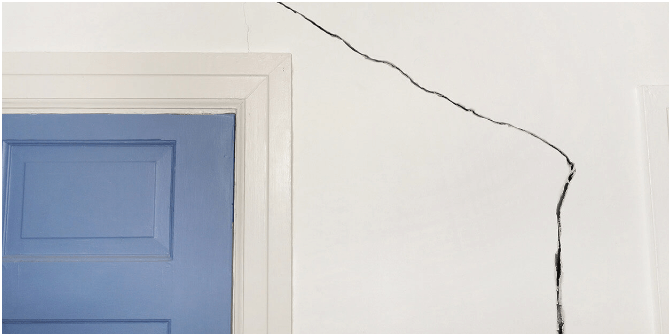UAE residents are grappling with the effects of extreme heat and rising humidity.
As summer reaches its peak in the United Arab Emirates (UAE), Reports of cracked walls and jammed doors are becoming increasingly common, highlighting the impact of the harsh weather conditions on buildings and infrastructure. The combination of high temperatures and humidity is placing significant stress on properties, leading to structural issues and inconveniences for many residents.
The sweltering heat, which often exceeds 40 degrees Celsius, coupled with humidity levels that can reach as high as 90 percent, creates an environment where materials expand and contract more than usual. This can lead to cracks in walls, especially in older buildings or those not designed to withstand such extreme conditions. Residents have reported that these cracks often appear suddenly and can range from minor fissures to significant splits that require urgent repair.
Jammed doors are another common issue faced by residents during the summer months. The high humidity causes wooden doors and frames to swell, making them difficult to open or close. This can be particularly problematic for those living in older homes where the materials have already undergone years of wear and tear. The expansion and contraction of materials not only affect doors but can also impact windows, leading to further inconvenience.
Maintenance companies and property management firms are seeing a surge in requests for repairs and inspections. Contractors are working tirelessly to address these issues, but the sheer volume of cases means that some residents are facing delays. For many, the problems caused by the heat and humidity are an annual occurrence, and while some have become accustomed to dealing with these challenges, others are expressing frustration at the recurring nature of the issues.
The UAE’s extreme summer weather is a well-known phenomenon, and the country has invested heavily in infrastructure designed to mitigate the effects of the heat. However, the combination of rapid urban development and climate conditions means that not all buildings are equipped to handle the most extreme weather. This is particularly true for older properties, which may not have been constructed with the same level of resilience as newer developments.
UAE Residents have been advised to take preventive measures to protect their homes from the effects of the heat and humidity. Regular maintenance checks, such as inspecting walls for early signs of cracks and ensuring that doors and windows are properly sealed, can help mitigate some of the issues. Using dehumidifiers and air conditioning systems can also reduce indoor humidity levels, helping to prevent the swelling of wood and other materials.
In addition to UAE structural issues, the extreme weather poses health risks, particularly for vulnerable populations such as the elderly and those with pre-existing health conditions. Heat exhaustion and dehydration are common concerns during the summer months, and authorities regularly issue advisories reminding residents to stay hydrated and avoid prolonged exposure to the sun. Public health campaigns also emphasize the importance of checking on neighbors and family members who may be more susceptible to the heat.
Despite the challenges, residents of the UAE are well-versed in coping with the summer heat. Many have adapted their routines to minimize exposure to the sun, scheduling outdoor activities for early morning or late evening when temperatures are slightly cooler. Shopping malls and other air-conditioned public spaces offer a respite from the heat, providing a place for people to gather and socialize in comfort.
Looking ahead, the UAE continues to invest in research and development to find innovative solutions to the challenges posed by its climate. This includes exploring new building materials and construction techniques that are better suited to withstand extreme heat and humidity. Urban planning initiatives also aim to create more sustainable and resilient communities, with a focus on reducing the urban heat island effect and enhancing green spaces.
The rising heat and humidity of the UAE summer are causing notable disruptions for residents, with reports of cracked walls and jammed doors becoming increasingly common. While these issues are a recurring challenge, preventive measures and timely maintenance can help mitigate some of the effects. The UAE’s commitment to improving its infrastructure and resilience in the face of extreme weather is ongoing, reflecting a broader strategy to ensure the well-being and comfort of its residents during the harsh summer months.
Stay Connected: ”Your Source for the Latest News Updates“





